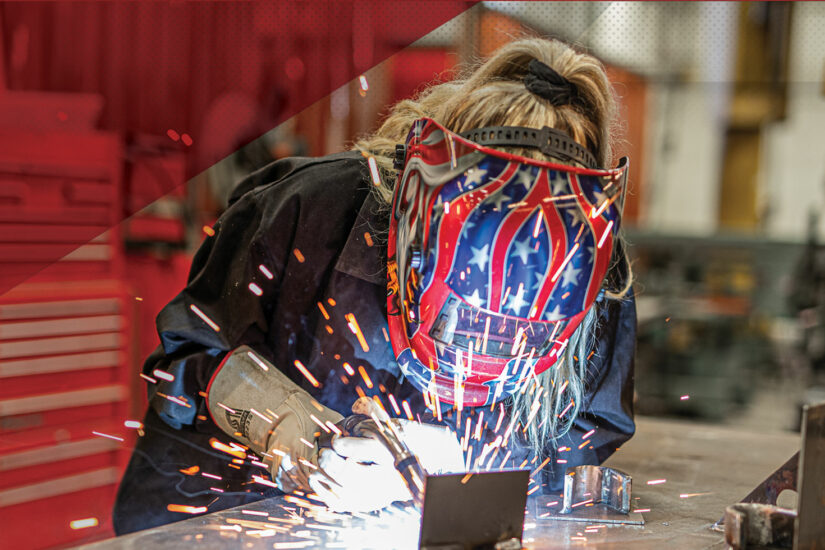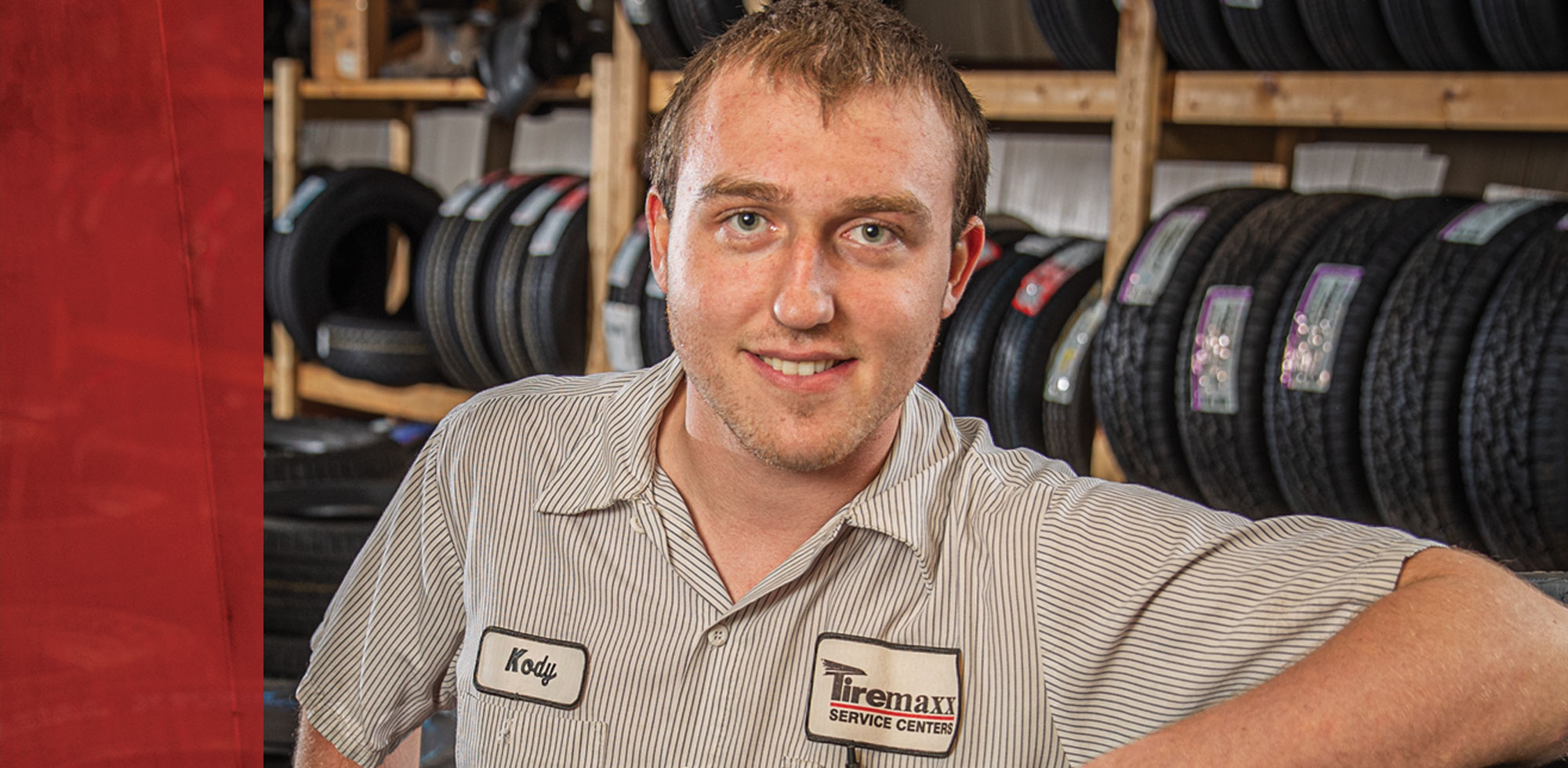
Workforce Ready
School-to-work programs throughout Central Minnesota are guiding high schoolers directly into careers
By Lynette Lamb | Photography by John Linn
On a lark, Willow Schuller signed up for an eight-week welding class while she was still a student at Technical High School in St. Cloud.
“I took the class at St. Cloud Technical & Community College (SCTCC) just to prove a point—I did it for fun,” said Schuller, who graduated from Tech High in 2019. “But I ended up really liking it!”
That moment of exploration, it turns out, also helped Schuller forge a promising career for herself. After taking that first class, she won a two-semester scholarship to SCTCC. She hadn’t even finished the course—which will end with her becoming a certified welder—when she was hired by DCI, Inc., a St. Cloud-based manufacturer of stainless steel storage and processing vessels.
Schuller is just one young person among many across Central Minnesota who local businesspeople and educators hope will soon be moving from high schools to workplaces throughout the region. As education and workforce experts rethink the current preference for sending all high school graduates to college, local companies and nonprofits are creating innovative programs to provide opportunities for future workers. “The majority of jobs in Central Minnesota will require a two-year technical college degree or certificate,” said Don Hickman, vice president for community and workforce development at the Initiative Foundation. “If we can expose young adults to the opportunities to find fulfilling work, minimize student debt, and stay within the region, it will have a significant impact on the shortage of skilled workforce that we’re currently experiencing and we expect will last nearly 20 years.”
Case in point: Schuller’s was a workforce development scholarship offered by SCTCC, which was funded by a consortium of local businesses, including Rotochopper, a grinding equipment manufacturer in St. Martin. The young person who won that scholarship in 2018, Alex Bromenschenkel of Rocori High School, began working full time for Rotochopper in May 2018, after he finished his yearlong welding class.
Besides scholarship support, Rotochopper also provides a school-to-work program with local school districts. Last year, Paynesville High School junior Davis Peltz worked mornings and over the summer as a welder and in other areas of the company. Rotochopper hopes to have an additional student worker from Paynesville or another nearby school this academic year. “It is awesome to watch them experience many areas of the company and to grow,” said Angie Brick, community relations director for Rotochopper.
Brick and others from Rotochopper also visit area high schools to meet with students and parents to educate them about today’s manufacturing world. “We do this to open the eyes of students and parents about manufacturing,” she said. “We want them to know it’s no longer a dark, dirty job. Instead, it’s a successful career. We can show them what the environment is really like and what the salary potential is.”

TECH OPPORTUNITIES
Along with scholarships and company internships, the region also boasts some broader initiatives designed to fill Central Minnesota’s growing number of tech and manufacturing sector jobs. The Initiative Foundation supports these school-to-work efforts with grants, including the Brainerd Lakes Area Bridges Workforce Academy, Greater St. Cloud’s Exploring Potential Interests & Careers (EPIC) and a matching grant program for high schools in Chisago, Isanti, Kanabec, Mille Lacs and Pine counties, which is administered by the GPS 45:93 economic development group.
One of those school-to-work programs is St. Cloud-based Partners for Student Success (PFSS), which is affiliated with the United Way of Central Minnesota. Among the main missions of PFSS is career readiness. “It might mean college or a two-year degree program,” said Amy Trombley, director of education partnerships. “Or it might mean going directly into the trades.”
A major Partners for Student Success offering is the EPIC program. The inaugural EPIC event at SCTCC in February 2019 brought together more than 2,300 students, 32 schools, 200 businesses and 60 different career fields. Going beyond the offerings of a traditional job fair, EPIC provided hands-on, interactive activities that allowed students to experience aspects of various jobs.
Starting next year, EPIC will morph into a yearlong student experience, with many companies holding pop-up events and in-school opportunities that provide students with mini-job experiences during the regular academic day. “We might have five health care organizations visit during lunchtime, for example,” said Trombley, “at an event at which kids can ask questions about possible health care careers.”
EPIC is sponsored by many organizations besides PFSS, including the Initiative Foundation, the Greater St. Cloud Development Corporation, SCTCC, Career Solutions, Rasmussen College, the St. Cloud Area Chamber of Commerce and the Minnesota Department of Employment and Economic Development (DEED). In turn, the Initiative Foundation is supported in its engagement on these issues by generous donations from East Central Energy and Great River Energy.
“It’s important that we prepare all our students for post-high school life,” said Trombley. “Many have a limited view of the possibilities. Our first job is to expose them to the breadth and scope of opportunities that are out there. We want to build a quality, productive workforce and get our young people ready for that next step in life.”
Partners for Student Success and other organizations are tightly focused on helping to address Central Minnesota’s workforce needs. “Right now, there is so much demand in the trades, such as jobs in health care, manufacturing and trucking,” said Trombley. “Just [recently] someone told me there were 400 to 600 open jobs at CentraCare in St. Cloud alone.”
SKILL-BASED SUCCESS
Another successful school-to-work program is Brainerd’s Bridges Career Academies & Workplace Connection—a program that the Initiative Foundation has supported since it inception. This workforce development initiative connects the Central Minnesota business community and educational partners, with the goal of optimizing students’ career or college readiness. It does this by offering career academies, business tours, classroom speakers, a career exploration day and job listings.

A third program, just getting started in the Belgrade-Brooten-Elrosa (BBE) school district, is Jagways—the brainchild of school superintendent Patrick Walsh. While he was the principal of Hutchinson High School, Walsh ran a successful program called TigerPath Academies, which provided hands-on opportunities for students.
Jagways is a high school career readiness program that focuses on three areas: construction, manufacturing and engineering; health care and human services; and business occupations. The idea, according to Walsh, is to fix the current mismatch between educational training and the jobs available in the workforce.
For the past 30 years, high schoolers across the nation have been urged to pursue a four-year college degree. “There are only jobs for about 25 to 30 percent of those who do go to college,” explained Walsh. “It’s not a good start to your career to spend four to six years on a degree that you’re not sure what you’ll do with and that you cannot monetize. We believe kids need on-time, on-point education that meets their initial career goals.”
Jagways, he said, is designed to allow high schoolers to take an array of skills-based courses, such as welding and first aid, because “that’s where the jobs are.”
Jagways already is making a difference. Nearly 60 students took the welding class last spring. By contrast, just 13 students had enrolled during the prior three years.
When Walsh arrived at BBE, the school already had a successful work-based learning program in place, with 72 kids signed up for internships with employers that included seed companies, nursing homes and larger businesses such as Louis Industries and Belgrade Steel Tank. He hopes to expand that program, thanks in part to a $25,000 Bush Foundation grant his district recently earned to help fund personalized learning.
One recent BBE graduate, Kody Bertram, made good use of his high school’s internship program. Bertram, who grew up on a dairy farm just northwest of Belgrade, spent two years plus summers working as a technician at the Belgrade Tiremaxx. “I came into this job with only a simple understanding of cars, but I am now confident in my abilities as a mechanic,” said Bertram, who graduated from BBE in 2019.
Although Bertram is switching to computer science studies at Alexandria Technical & Community College, another sector with strong employment and wage potential, he believes his automotive internship taught him valuable workplace skills. “Work experiences like mine teach a work ethic, adaptability and a sense of pride,” he said. “Plus, they help high schoolers explore available careers, enabling us to choose fields we will really enjoy.”
That on-the-job learning is a crucial part of education, according to Walsh. “I believe learning is more of an active process,” he said. “We’re trying to inject the workforce into high school a little bit more.
“Skilled labor is the No. 1 job opportunity,” he continued. “If you can step into the workforce in a skilled position, such as an understanding of computer-aided design, so many more possibilities open up for you. Instead of having a transcript made up only of classes like English and social studies, we envision one full of skills mastered and certifications acquired.”
Such school-to-work programs and opportunities, according to Rotochopper’s Brick, are key to keeping Central Minnesota prosperous and vital. “It is part of our company’s mission statement to keep people in this area employed,” she said. “We know the importance of keeping our Central Minnesota communities growing and vibrant.”